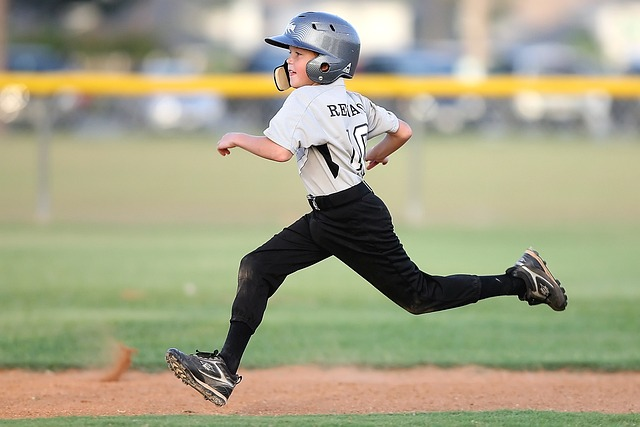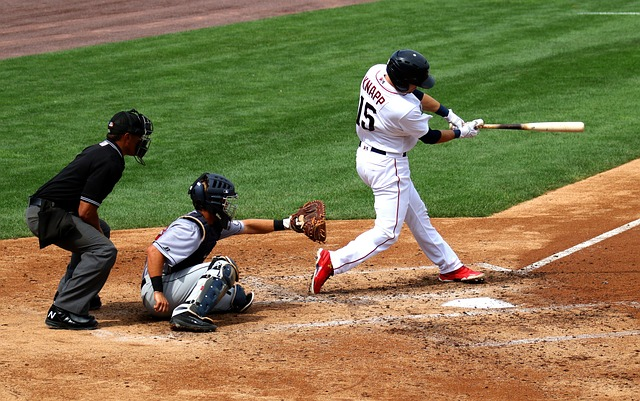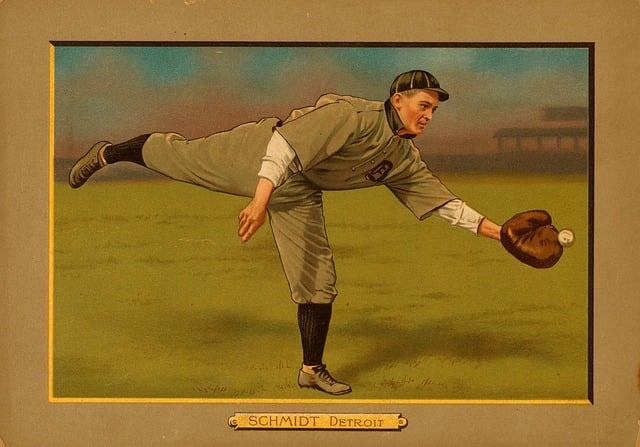
What exactly is WAR or better yet, what's war in baseball really mean? Defined, WAR or Wins Above Replacement, is a statistic in baseball used to measure a player's overall value compared to a "replacement level" player, typically defined as a minor league or bench player. The idea behind WAR is to provide a comprehensive measure of a player's offensive and defensive contributions, as well as their baserunning and positional value, all in one number. By comparing a player's WAR to a replacement for player's contribution, it provides a way to quantify how much more valuable a player is to their team compared to someone who could easily be replaced.
Wins above replacement is calculated using a combination of various traditional and advanced statistics, including batting average, on-base percentage, slugging percentage, stolen bases, batting runs in, runs scored, defensive runs saved, and others. These statistics are then adjusted for the player's position and the league averages, and are combined to create a single baseball reference number. The number is expressed as wins above what a replacement player would be expected to provide. For example, a player with a WAR of 5 would be considered 5 wins more valuable to their team than a replacement.
A "replacement level" player in baseball refers to a player who can be easily acquired and is readily available to fill in for an injured or underperforming player. This player is often thought of as a minor league, free agent or bench player who can step in and perform at a similar level to the player they are replacing on major league baseball teams. In the context of evaluating a player's performance, the term "replacement level" serves as a benchmark for measuring a player's overall value compared to a player who can easily be replaced. It's important to note that the definition of a replacement level player can vary, with some sources using a specific minor leaguer, while others use a more general definition. Regardless of the specific definition, the concept of a positional adjustment replacement level player is a crucial part of the WAR statistic, as it provides a baseline for evaluating a player's value relative to someone who could be easily replaced.
To calculate WAR for hitters, a combination of traditional and advanced statistics, including batting average, on-base percentage, slugging percentage, batting runs in, runs scored, stolen bases, OPS baseball stat and OPS+, and others. These statistics are adjusted for the league averages and the position, and are combined to create a single number that represents the player's overall value compared to a player that would replace them. For example, a player with a higher on-base percentage fielding runs in and more stolen bases will typically have a higher WAR than an average player with a lower on-base percentage and fewer stolen bases, even if they have a similar batting average and slugging percentage.
To calculate a hitter's WAR, the offensive context of their performance is considered, taking into account factors such as the player's park and the difficulty of the offensive environment. The player's defensive and baserunning value is also taken into account. For example, a player who hits 30 home runs in a hitter-friendly park may have a lower WAR than a player who hits 25 home runs in a pitcher-friendly park, due to the differences in their offensive environment.
Wins above replacement for pitchers (pitcher WAR) in baseball is calculated using a combination of traditional and advanced statistics independent pitching, including earned run average, walks and hits per innings pitched (WHIP), strikeout-to-walk ratio, and others. These statistics are adjusted for the league averages, and are combined to create a single number that represents the pitcher's overall value compared to a similar lower level player. Unlike WAR for hitters, pitching WAR which takes into account the offensive context of the player's performance, WAR for pitchers only considers the pitcher's performance on the mound.
When calculating WAR for pitchers, it's important to take into account the defensive support that the pitcher receives. A pitcher who plays on a strong defensive team is likely to have a lower ERA than a pitcher who plays on a weak defensive team, even if they have similar pitching statistics. To account for this, the defensive component of WAR uses advanced metrics, such as defensive runs saved, to measure the overall quality of a pitcher's defense.
Finally, the baserunning component of the WAR metric for pitchers is based on the number of runs the pitcher allows on the base paths. A pitcher who consistently holds runners on base and limits stolen bases will have a higher WAR than a pitcher who struggles in this area, even if they have similar pitching statistics. By considering these additional components, pitching WAR provides a comprehensive and accurate measure of a pitcher's overall value to their team compared to a player that could replace them.

A good WAR in baseball for both pitchers and hitters can vary based on several factors such as the player's role, position, and performance context. For starting pitchers, a WAR of 3 or higher is considered good, while a WAR of 5 or higher is considered excellent. For relief pitchers, a WAR of 1 or higher is generally considered good, while a WAR of 2 or higher is considered excellent. Similarly, for everyday players, a WAR of 2 or higher is considered good, while a WAR of 4 or higher is considered excellent, and for elite players, a WAR of 6 or higher is not uncommon. It's essential to note that WAR is just one of many statistics used to evaluate a player's performance, and a high WAR does not guarantee success. However, it provides a valuable baseline for identifying players who are likely to be successful in the future.
To calculate wins above replacement (WAR) for position players, various factors are considered, including offensive production (ability to hit and batting runs in) defensive ability, and playing time. The offensive component is determined by comparing the player's offensive plate appearances and statistics to league averages and adjusting for their home park. This includes statistics such as batting average, on-base percentage, and slugging percentage. The defensive component is calculated by using advanced defensive metrics such as defensive runs saved, double plays and ultimate zone rating. Playing time, or the amount of time a player spends on the field, is also taken into account as it affects a player's overall value. These components are then combined to give an overall position player WAR score, which measures a player's value compared to how many more wins a position players replacement would provide.

According to Baseball Reference, the highest career WAR in Major League Baseball (MLB) history is held by Babe Ruth, with a score of 168.4. Ruth, who played for the Boston Red Sox and New York Yankees, was a dominant player in the early 20th century and is widely regarded as one of the greatest hitters in the history of the sport. Other players in the top five for the highest WAR for a career include Ty Cobb (157.1), Walter Johnson (143.3), Stan Musial (131.8), and Rogers Hornsby (131.5). It's worth noting that these figures may change over time as new data becomes available and the calculation of WAR evolves.
A good WAR value for a major league player is considered to be around 2.0 or higher. A WAR value of 2.0 represents a player who is providing two more wins to their team than a replacement would have based on how many innings they play. This means that a player with a WAR value of 2.0 is a valuable contributor to their team and is helping them win more games. A player with a WAR value above 2.0 is considered to be an above-average player, while a player with a WAR value below 2.0 is considered to be below league average.
A player's WAR with a wins above replacement value above 4.0 is considered to be a star player and is providing a significant impact to their team. These players are typically among the league leaders in various offensive and defensive categories and are often in contention for MVP awards. On the other hand, a player with a negative WAR value is considered to be a liability to their team and is providing fewer wins than typical average player or a replacement would in the same position in a single season. These players are typically struggling or dealing with injuries, and may not be in the starting lineup regularly.

According to Baseball Reference, the player's WAR that was the highest in Major League Baseball (MLB) history is Babe Ruth, with a score of 168.4. This puts Ruth significantly ahead of other great players, such as Derek Jeter and Mike Trout. Jeter, who spent his entire career with the New York Yankees, has a WAR of 72.0 for his career, while Trout, who plays for the Los Angeles Angels, has a career of 72.7 WAR through the 2021 season. Although these players are still highly regarded and have had successful careers, even MVP baseball season-level stats, they fall short of Ruth in terms of overall value to their teams. Baseball reference's calculation shows how WAR measures replacement level players across league adjustment and baseball history no matter where a player played.
In conclusion, WAR is a highly useful statistic in baseball that provides a comprehensive measure of how well a player plays and a player's overall value to their team. It is an essential tool for evaluating players' contributions to their team and comparing their performances across different seasons and teams. By considering a player's total contributions across wide range of factors, including a player's offensive, defensive, and baserunning skills, WAR provides a more accurate picture of their impact on the game than traditional statistics like batting average or home runs as it reflects additional wins.
Moreover, as baseball continues to evolve and data analysis becomes more sophisticated, the importance of WAR is only likely to increase. As teams and analysts continue to rely on advanced metrics to evaluate players, WAR will remain a critical part of the conversation. Ultimately, whether you are a die-hard baseball fan or a casual observer, understanding WAR is essential for appreciating the game's complexities and appreciating the incredible contributions of the sport's top players.

Chris Sloan is a former baseball league commissioner and travel baseball coach who has made significant contributions to the sport. In 2018, he founded selectbaseballteams.com, a website that helps parents find youth and travel baseball teams in their local areas. Since its launch, the website has experienced impressive growth, offering a wealth of resources including teams, news, tournaments, and organizations. Chris's unwavering passion for baseball and his innovative approach to connecting parents with quality baseball programs have earned him a respected reputation in the baseball community, solidifying his legacy as a leading figure in the world of youth and travel baseball.
There are 0 comments on "What is WAR in Baseball and What Does it Mean?"
chandler allen says:
"Hi my name is chandler, i’ve enjoyed..."
On Wanting to tryout for summer ball. as an 18 year old
david graham says:
"With no current MLB team in Canada,..."
On With no current MLB team in
Charles Chavez says:
"To All Coaches: Do you have13U or..."
On Looking for Games